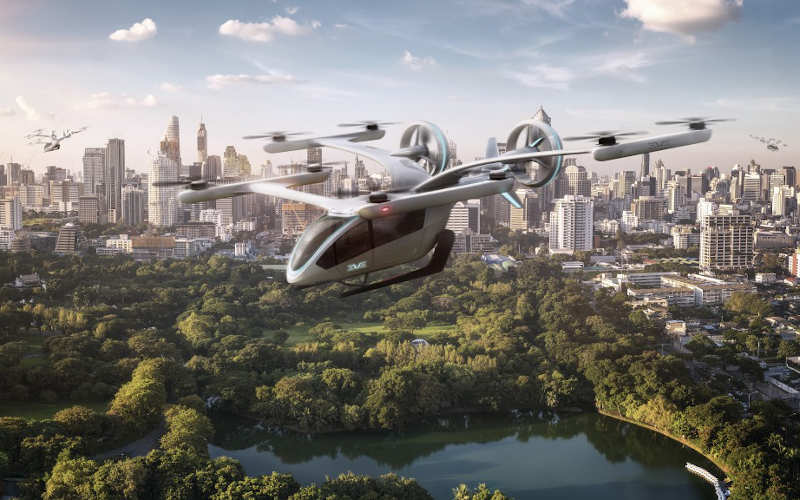The Key to Successful Adoption of Urban Air Mobility Services May Be on the Ground
Incentivizing commuters to commute -- by air
February 16, 2025 |

In the same way people choose where to live based on a home’s proximity to a freeway, autobahn, or public transportation to best facilitate their daily commute, Ying Zhao and Tao Feng, researchers with the Urban and Data Science Lab, Graduate School of Advanced Science and Engineering at Hiroshima University, Japan conducted the study, “Commuter Choice of UAM-friendly Neighborhoods.” Their aim was to divine which infrastructure and travel environment features should influence how policymakers develop urban neighborhoods to make them a favorable choice for urban air mobility (UAM) commuters.
Flight-friendly features
The scientists chose Beijing, People’s Republic of China, as the model for their study. Beijing’s 16,410 square kilometers (about 6,336 square miles) and 21.85 million residents with a commuting spatial radius of 41 kilometers (about 25 miles) suggests that UAM will be a welcome option for the city’s commuters. That, in turn, leads to the need for urban planners to take into consideration how to develop UAM-friendly neighborhoods. Vertiport locations, parking at those vertiports, and drone window-docking pads to facilitate package deliveries are among the considerations when modifying current city services and planning for future services and the infrastructure necessary to support them.
Give the people what they want
The study revealed that people want access to vertiports less than one kilometer (about a half mile)/from their homes, very low cost or free parking, and where commuting time can be brought to 15 minutes or less. High-income households are most likely to populate these neighborhoods. Higher income households, males, individuals aged 45 and above, with bachelor’s degrees or lower, households comprising three or more members, that own cars, and lack helicopter piloting experience were most likely to avail themselves of these UAM-friendly communities. Using these findings, urban planners can optimize the integration of UAM into the cities of the future.

Top 3 Takeaways
- Urban planners need to be mindful of UAM as they plan the cities of the future.
- Higher income households, households with three or more members, males, and people over the age of 45 are most likely to choose UAM-friendly neighborhoods
- Window or balcony drone-docking pads to facilitate package delivery will be a desirable feature of UAM-friendly neighborhoods
Keywords: #AAMtoday, #AAM, #UAM, #drones, #package delivery, #vertiport


